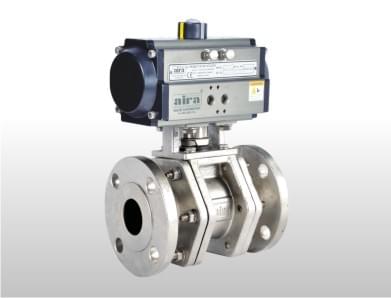What Is gate Valve?
For water conveyance frameworks, the gate valve is the most well-known valve. A linear-movement separation valve can either stop or let course through. These valves ought not to be utilized to control stream; instead, they ought to be used open or shut, as fractional opening can cause harm. The name "gate valve" originates from the closing part of the valve sliding into the flowing liquid to induce shutoff and in this manner functioning as a door. gate valves seclude explicit regions of the water supply network for maintenance, fix, and new installation exercises, as well as reroute water streams across the pipeline.
Due to its straightforward plan and flexibility to be utilized in the scope of low-pressure-drop applications, the gate valve is quite possibly the most ordinarily utilized valve today. Door valves are intended to be full-port valves. This implies that the valve port is a similar size to the inner measurement of the connecting pipe. A pedal to the metal door valve permits liquid to go through the pipeline without being impeded or producing a strain drop. This likewise makes it conceivable to clean the line using a cleaning pig.
Since door valves are less perplexing to plan than other enormous-size valves, they are broadly used with greater line distances across, ranging from 2″ to the biggest pipelines. Door valves arrive in various sizes, materials, temperature, and tension ratings, as well as gate and hat styles. Electric and pneumatic actuator gate valves are accessible, but because of their periodic use, manual door valves are more practical.
Aira Euro Automation is the leading Valve Supplier in Bahrain. We offer various types of industrial valves like ball valves, butterfly valves, globe valves, plug valves, and many more.
What Is Butterfly Valve?
Butterfly valves are a sort of quarter-turn rotational movement valve that is utilized to shut down streams in pipelines. Butterfly valves are regularly referenced as a method for controlling streams. Nonetheless, this isn't proposed because it can hurt the valve circle and compromise the sealing qualities. Butterfly valves are easy to utilize and open. The valve can be shut or opened by rotating the handle 90 degrees. Huge Butterfly valves are normally outfitted with a gearbox, which interfaces the handwheel to the stem by employing cogwheels. This makes the valve's activity simpler, however, it comes to the detriment of speed.
These valves are applied in a wide assortment of cycle media and industries, including water supply, circulation, and assortment, as well as pumping stations, and they have a great many purposes, especially in stream confinement. Simple creation and minimization are two of their essential benefits over other valve families, resulting in lighter weight and cheaper final results with more modest installation footprints and quicker activation rates. We are the leading actuated ball valve suppliers.

Butterfly valves arrive in various shapes and sizes, each fit to specific tensions and purposes. There are three sorts of circle offset plans for the butterfly valves:
- Zero counterbalances (concentric) butterfly valve,
- Twofold offset (twofold erratic) butterfly valve, and
- Triple offset (triple erratic) butterfly valve.
The zero-offset butterfly valve, which depends on the adaptability of elastic, has the most reduced pressure rating. The elite presentation twofold offset butterfly valve, which is used in some degree higher-pressure frameworks, is balanced from the centerline of the body seal and the plate seat (offset one), as well as the centerline of the drag (offset two); this gives a cam movement during activity to lift the seat out of the seal, leading to decreased grinding and a lower wear propensity than the zero offset plan. The triple offset butterfly valve is the ideal valve for high-pressure frameworks. The circle seat contact pivot is counterbalanced in this valve, successfully eliminating sliding contact between the plate and the seat. The seat is a triple balanced valve made of metal so it very well might be machined to make an air pocket tight shut-off when it comes into contact with the plate.
- Carry type butterfly valve,
- Wafer-type butterfly valve,
- Flanged butterfly valve, and
- Butt-welded butterfly valve.
Gate Valve versus Butterfly Valve
In a gate valve, the medium stream is constrained by a door. A door is a strong rectangular or round circle that is joined to a stem and fills in as a boundary. An actuator, like a handwheel, is generally used to work door valves. A valve stem is connected to the actuator, which sends rotational energy. When the gate valve is opened, this energy changes over the strings of the valve stem into the door as well as the other way around when the door valve is shut. Subsequently, this energy moves the door vertically or descending. This valve is alluded to as a multi-turn valve since it requires more than a 360° go to completely open or close. The stem and gate will get in a descending heading across the liquid streamline when the handle wheel is pivoted clockwise, and the door will be firmly positioned between the two seats. As a result, when the valve is completely shut, there will be no liquid spillage. At the point when the handle wheel is turned in an enemy of clockwise way, the stem and the door move up across the liquid streamline, and the valve opens from its shut state, allowing liquid to course through the gate valve. At the point when the door valve is completely open, there will be no or very little protection from the progression of liquid.

